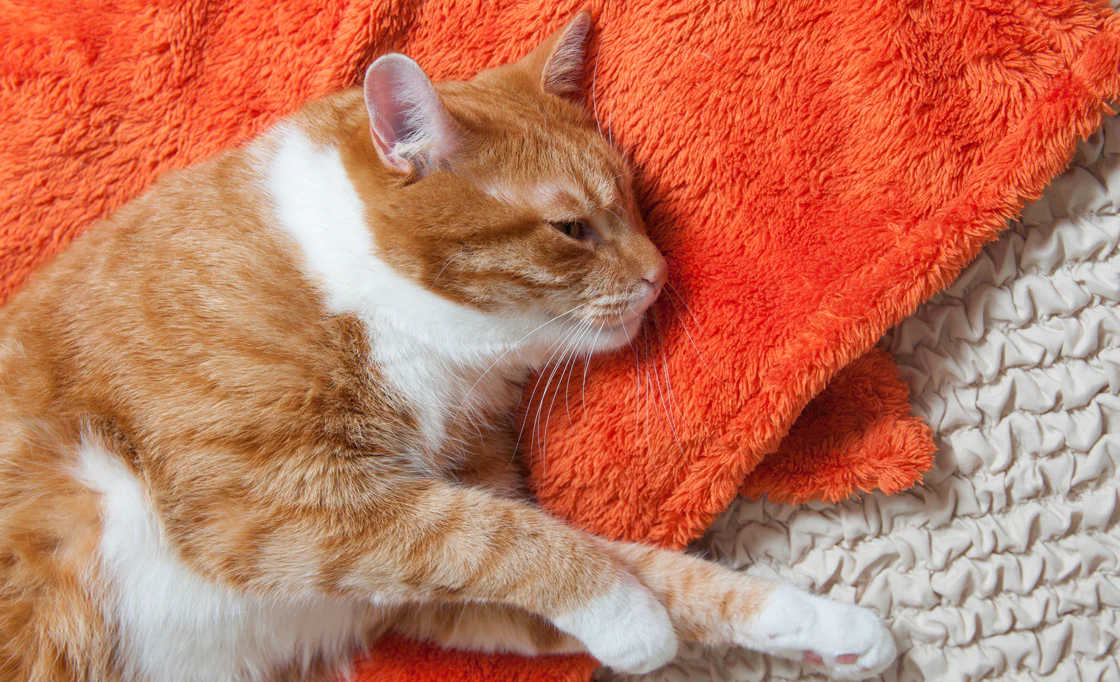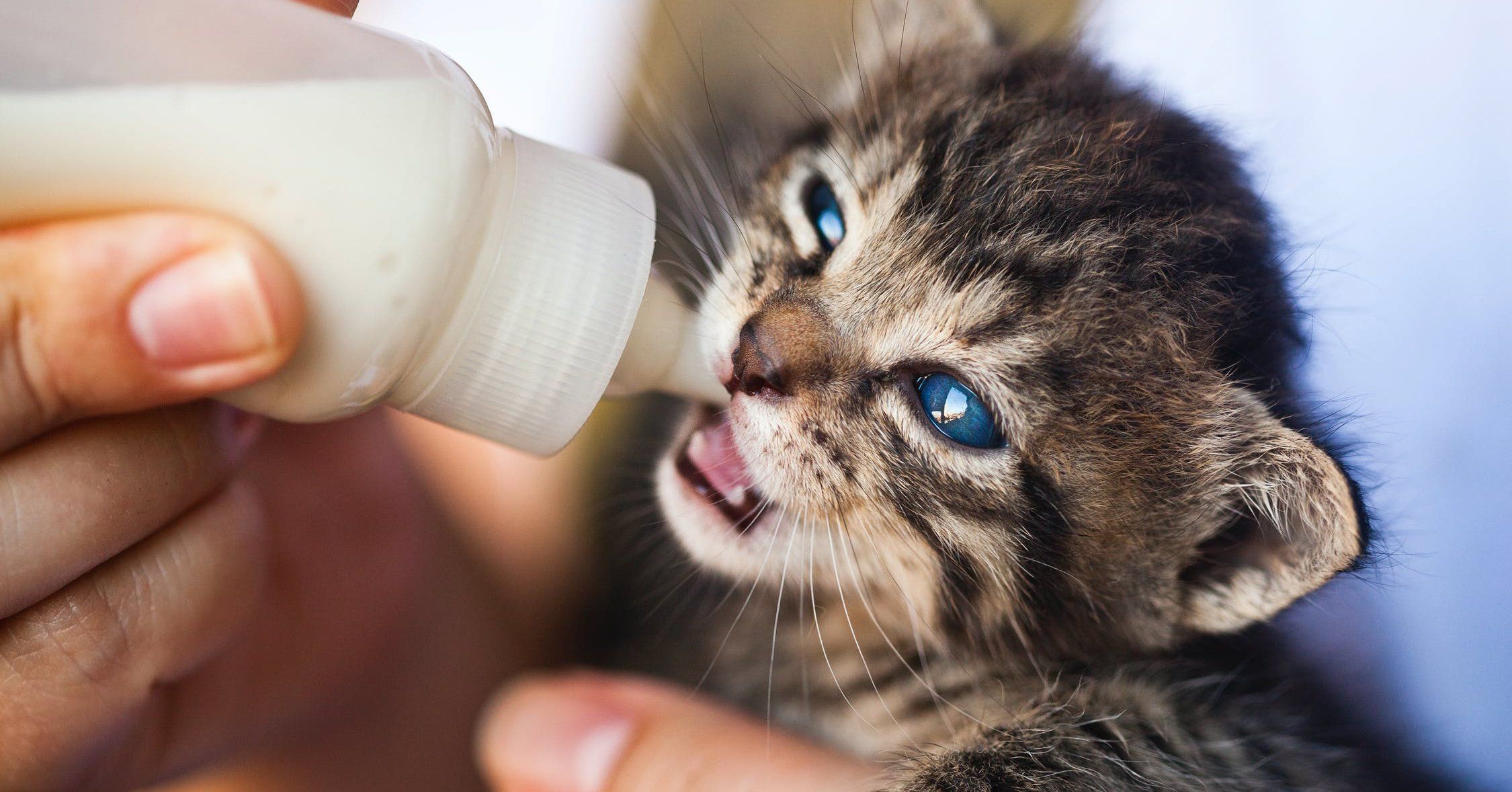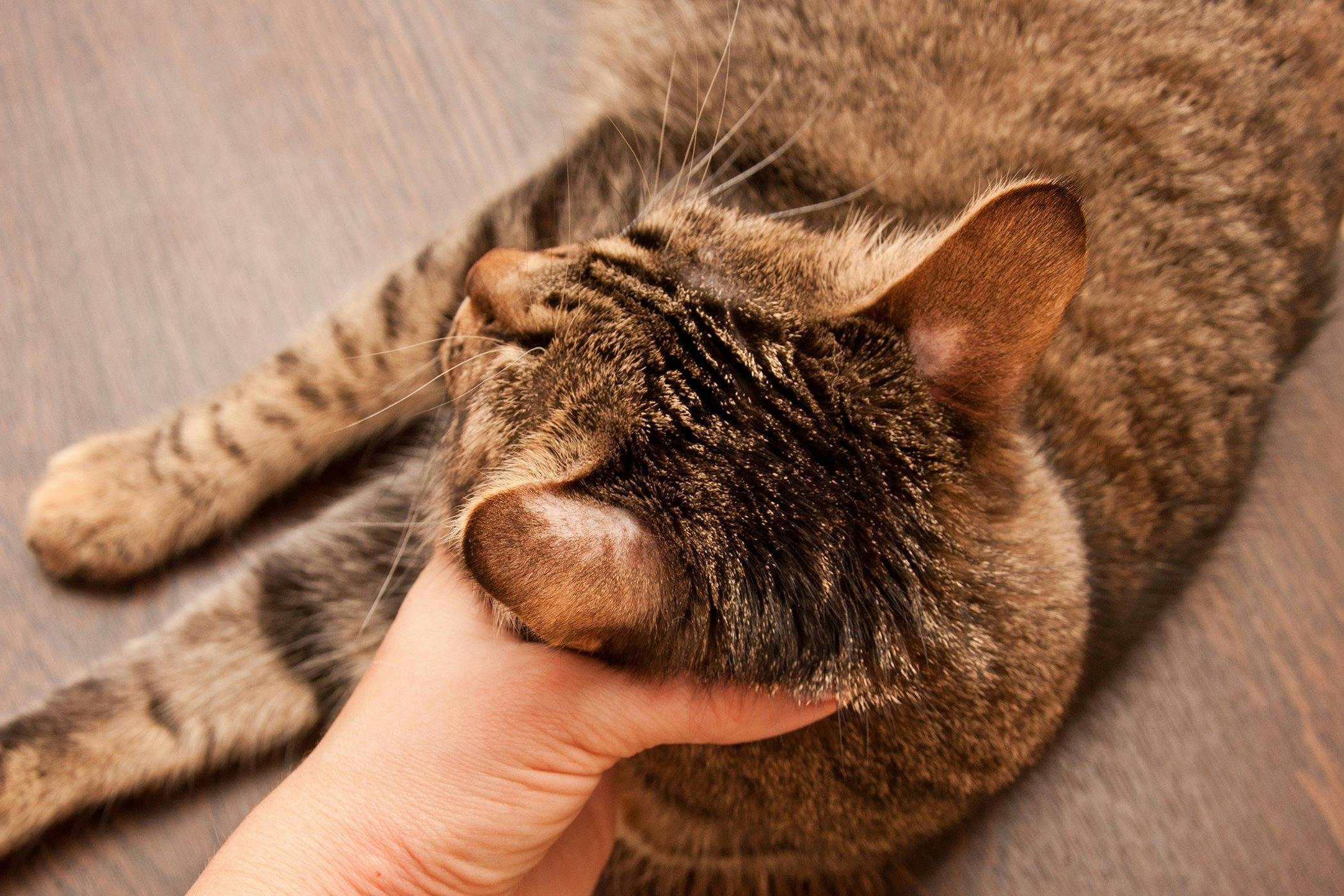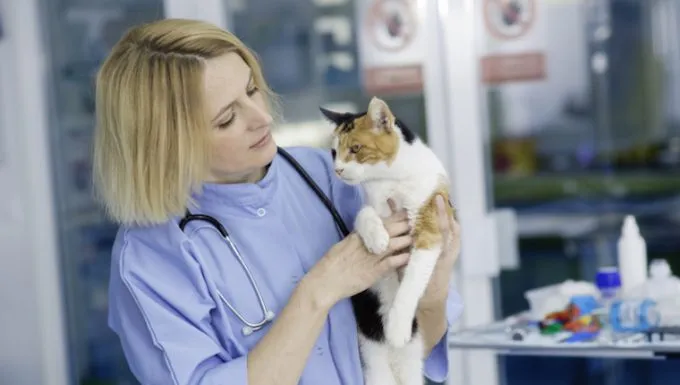Causes of Eosinophilic Granuloma Complex in Cats
Underlying Medical Conditions

The Eosinophilic Granuloma Complex (EGC) is a group of skin conditions that affect cats, characterized by inflammation and the presence of eosinophils, a type of white blood cell. The underlying causes of EGC in cats are multifactorial and not fully understood, but several medical conditions have been identified as potential contributing factors.
One of the primary causes of EGC is the presence of a condition known as atopy or allergies. Atopic dermatitis is a common skin condition that can lead to excessive scratching, chewing, and licking of the affected areas, which can contribute to the development of EGC. Allergies can be caused by a variety of factors, including environmental allergens such as pollen, dust mites, and mold, as well as food sensitivities.
Another underlying condition associated with EGC is gastrointestinal disease. Cats with gastrointestinal issues such as inflammatory bowel disease (IBD), pancreatitis, or intestinal foreign bodies may develop EGC due to the chronic inflammation and irritation caused by these conditions. In some cases, gastrointestinal disease can even be the underlying cause of food sensitivities that contribute to EGC.
Cat owners often wonder about the connection between stress and EGC in cats. While the exact relationship between stress and EGC is unclear, it is thought that chronic stress can exacerbate existing skin conditions, including EGC. Stress can manifest in different ways in cats, including changes in behavior, appetite, or elimination habits, which can contribute to the development of EGC.
Parasitic infestations, particularly flea allergy dermatitis (FAD), have also been linked to EGC. Flea bites can cause intense itching and inflammation, leading to hair loss and skin lesions characteristic of EGC. In some cases, cats may develop an allergic reaction to flea saliva, which can contribute to the development of FAD.
Lastly, genetic factors may play a role in the development of EGC in cats. Certain breeds, such as Siamese, Abyssinian, and Bengal cats, are more prone to developing skin conditions like EGC due to their genetic predisposition. Research has identified several genetic mutations associated with increased risk of skin disease in these breeds.
It’s worth noting that many cases of EGC may be caused by a combination of factors listed above, making diagnosis and treatment challenging. A veterinarian may use a combination of diagnostic tests, including skin scrapings, biopsies, and blood work, to identify the underlying cause of EGC in your cat.
A comprehensive approach to treating EGC often involves addressing the underlying medical condition contributing to its development. This may include medications such as corticosteroids or immunomodulators to reduce inflammation and itching, antibiotics to clear infections, or antihistamines to alleviate allergic reactions. In some cases, dietary changes or supplements may be recommended to address gastrointestinal issues or food sensitivities.
With proper diagnosis and treatment, many cats can manage their EGC symptoms and live comfortably with this condition. If you suspect that your cat is suffering from EGC, consult with a veterinarian to determine the best course of action for your feline friend.
The exact cause of Eosinophilic Granuloma Complex (EGC) is still not fully understood, but it is believed to be linked to a combination of genetic and environmental factors. Research suggests that cats with autoimmune disorders or allergies may be more prone to developing EGC.
The exact cause of Eosinophilic Granuloma Complex (EGC) in cats has not been fully understood, but it is believed to be linked to a combination of genetic and environmental factors.
Research suggests that certain breeds such as Siamese and Abyssinian are more prone to developing EGC. This may indicate a possible genetic link or predisposition to the condition.
The presence of autoimmune disorders in cats, which can cause their immune system to malfunction and attack healthy tissues, may also contribute to the development of EGC. Autoimmune diseases such as pemphigus, lupus, and rheumatoid arthritis have been linked to EGC in some cases.
Allergies are another factor that has been suggested to contribute to the development of EGC in cats. Some research suggests that an allergic reaction may trigger the formation of eosinophilic granulomas.
Other environmental factors such as stress, changes in environment or diet, and exposure to certain chemicals or toxins may also play a role in the development of EGC in some cases.
Some studies suggest that EGC may be associated with deficiencies in nutrients such as vitamin A, zinc, and omega-3 fatty acids. These deficiencies may contribute to the formation of eosinophilic granulomas in cats.
In addition, some research suggests that EGC may be linked to certain gastrointestinal conditions or diseases such as inflammatory bowel disease (IBD) or pancreatitis. The exact relationship between these conditions and EGC is still unclear and requires further study.
It is worth noting that many of these factors may interact with each other in complex ways, making it difficult to pinpoint the exact cause of EGC in individual cats. Further research is needed to fully understand the causes and mechanisms of this condition.
Factors that May Increase the Risk of Developing EGC
Genetic predisposition (e.g. Siamese, Abyssinian breeds)
Autorimmune disorders (e.g. pemphigus, lupus, rheumatoid arthritis)
Allergies
Stress and changes in environment or diet
Exposure to certain chemicals or toxins
Nutrient deficiencies (e.g. vitamin A, zinc, omega-3 fatty acids)
Gastrointestinal conditions or diseases (e.g. IBD, pancreatitis)
Possible Links Between EGC and Other Conditions
Autoimmune disorders (e.g. pemphigus, lupus, rheumatoid arthritis)
Gastrointestinal conditions or diseases (e.g. IBD, pancreatitis)
Nutrient deficiencies (e.g. vitamin A, zinc, omega-3 fatty acids)
Symptoms of Eosinophilic Granuloma Complex in Cats
Physical Symptoms
The Eosinophilic Granuloma Complex (EGC) in cats is a group of skin diseases characterized by an excessive accumulation of eosinophils, a type of white blood cell. The symptoms and physical appearance of the condition vary depending on the specific form of EGC that a cat has.
The three main types of EGC in cats are: Eosinophilic Granuloma (EG), Indolent Ulcer (IU), and Feline Inductive Dermatitis (FID). Each type presents with different clinical signs, which can make diagnosis challenging.
Eosinophilic Granuloma (EG): This is the most common form of EGC in cats. The primary symptom of EG is a raised, crusty skin lesion on the belly, chest, or near the anus. The lesions can range in size and may be single or multiple.
The affected area often becomes infected, leading to a strong odor and purulent discharge. Some cats may experience fever, weight loss, or lethargy due to the infection. The exact cause of EG is still unknown, but it’s thought to be related to allergies, parasites, or autoimmune disorders.
Indolent Ulcer (IU): IU is characterized by one or more shallow ulcers on the skin, often near the anus. The ulcers are typically painless and may have a crusty or scabby surface. In some cases, the ulcers can be large enough to cause discomfort or difficulty defecating.
Cats with IU may experience weight loss, anemia, or increased eosinophil counts due to chronic inflammation. IU is often associated with other conditions, such as gastrointestinal disease or hyperthyroidism.
Feline Inductive Dermatitis (FID):
FID is the least common form of EGC and presents with a thickening of the skin on the belly or near the anus. The affected area may become erythematous, crusting, or ulcerated, leading to secondary infections.
Cats with FID may experience significant discomfort, pain, or difficulty defecating due to the size and location of the lesions. Like IU, FID is often associated with other conditions, such as gastrointestinal disease or hyperthyroidism.
Cats with EGC often exhibit distinctive physical symptoms, including hair loss, skin thickening, and redness. The lesions typically appear as crusty or scabby patches on the skin, particularly around the face, legs, and torso.

Cats with EGC often exhibit distinctive physical symptoms that are a combination of skin and systemic signs.
The most common symptom of Eosinophilic Granuloma Complex (EGC) is the presence of skin lesions, which can be divided into three main types: cutaneous, oral, and pulmonary. The cutaneous form is the most common and involves the formation of crusty or scabby patches on the skin.
The lesions typically appear as raised, red, or purple plaques, often with a crusty or scabby surface, and can range in size from small patches to large, open ulcers. They may be single or multiple and can occur anywhere on the body, but are most commonly found around the face, legs, and torso.
Othervarious symptoms associated with EGC include:
Hair loss: Cats with EGC often develop a condition called alopecia, which is characterized by patchy hair loss due to inflammation of the skin. The hair loss can occur anywhere on the body but is most commonly found on the legs and torso.
Skin thickening: As the lesions heal, they may leave behind areas of skin that become thickened or hardened. This thickening can make the affected areas more susceptible to injury.
Redness and inflammation: The affected areas often appear red, inflamed, and hot to the touch, which can be painful for your cat.
Lymph node enlargement: In some cases, cats with EGC may develop enlarged lymph nodes in their neck or other parts of their body. This can indicate that the disease has spread beyond the skin.
Other symptoms may include:
Weight loss and poor appetite
Dermatitis (inflammation of the skin)
Fungal infections
Bacterial infections
These symptoms can vary in severity from cat to cat, but it’s essential to seek veterinary care if you notice any changes in your cat’s appearance or behavior.
Treatments for Eosinophilic Granuloma Complex in Cats
Topical and Systemic Treatments
The Eosinophilic Granuloma Complex (EGC) in cats encompasses a group of conditions characterized by the accumulation of eosinophils in various tissues and organs. The three main forms of EGC in cats are cutaneous, indolent ulcers, and visceral forms, each presenting distinct clinical features.
Topical treatments for EGC focus on reducing inflammation, promoting healing, and preventing infection. A common approach involves the use of topical corticosteroids, such as betamethasone or prednisolone acetate, applied directly to the affected area. These medications can help alleviate inflammation and promote tissue repair.
Systemic treatments are often necessary for cats with extensive disease or those that do not respond to topical therapy. Systemic corticosteroids, such as dexamethasone or prednisone, may be administered orally to reduce eosinophilic activity systemically. However, long-term use of systemic steroids can lead to adverse effects, making them a less preferred option for chronic management.
Immunomodulatory agents, like cyclosporine or azathioprine, have been used in cats with EGC to modulate the immune response and reduce eosinophilic activity. These medications may be more effective than corticosteroids in some cases, as they target specific components of the immune system involved in disease pathogenesis.
Cytokine antagonists, such as anti-IL-5 monoclonal antibodies, are being explored for their potential use in treating EGC in cats. These medications aim to specifically target and neutralize cytokines involved in eosinophil activation and survival, providing a more targeted therapeutic approach with potentially reduced side effects.
Surgical excision of lesions may be necessary in some cases, especially when the disease is localized or there are concerns about the integrity of surrounding tissues. In such scenarios, surgical removal can provide immediate relief and prevent further tissue damage.
Treatment for EGC usually involves a combination of topical and systemic therapies. Topical corticosteroids may be applied directly to the affected areas, while systemic treatments such as antibiotics or antihistamines may be prescribed to address underlying infections or allergic reactions. In some cases, immunosuppressive medications may be necessary to manage severe cases of EGC.
Treatment for Eosinophilic Granuloma Complex (EGC) in cats typically involves a multi-faceted approach that combines topical and systemic therapies to address the underlying causes of the condition.
Topical corticosteroids are often applied directly to the affected areas, such as skin lesions or hair loss, to reduce inflammation and promote healing. This type of treatment is usually effective for mild cases of EGC and can provide rapid relief from symptoms.
In more severe cases of EGC, systemic treatments may be necessary to address underlying infections or allergic reactions that are contributing to the condition. Antibiotics may be prescribed to treat bacterial infections, while antihistamines can help alleviate allergic reactions and reduce inflammation.
Immunosuppressive medications may also be necessary in some cases of EGC, particularly if the condition is severe or chronic. These medications work by suppressing the immune system’s overactive response to allergens or other stimuli that are causing the eosinophilic granuloma lesions.
In addition to these treatments, your veterinarian may also recommend a range of supportive care measures to help manage your cat’s symptoms and prevent complications. These may include dietary changes, such as feeding a hypoallergenic diet, or providing medications to control secondary infections or allergic reactions.
It’s worth noting that each case of EGC is unique, and the most effective treatment plan will depend on the individual cat’s needs and the severity of their condition. Working closely with your veterinarian to develop a tailored treatment plan can help ensure the best possible outcome for your cat.
According to a study by the University of Pennsylvania School of Veterinary Medicine, successful treatment outcomes for cats with EGC have been reported in approximately 70% of cases. However, the prognosis can vary depending on the severity and duration of the disease.
The Eosinophilic Granuloma Complex (EGC) is a group of idiopathic skin conditions that affect cats worldwide.
According to a study by the University of Pennsylvania School of Veterinary Medicine, successful treatment outcomes for cats with EGC have been reported in approximately 70% of cases, however, the prognosis can vary depending on the severity and duration of the disease.
The primary goal of treatment is to control symptoms, reduce inflammation, and prevent complications.
Several treatment options are available for cats with EGC:
Corticosteroids
Prednisone is commonly used to reduce inflammation and itching.
Immunosuppressive agents
Cyclophosphamide or chlorambucil may be prescribed to control the immune system’s overactive response.
Antihistamines and antibiotics
Mild cases of EGC can be managed with antihistamines, while antibiotics may be used to treat secondary infections.
Phototherapy or laser therapy
Certain cases of EGC may benefit from phototherapy or laser therapy, which can help reduce inflammation and promote healing.
Surgical removal of lesions (in severe cases)
In addition to medical treatment, a good quality diet can also play an important role in managing EGC. A balanced and nutrient-rich diet may help reduce inflammation and promote overall health.
It is essential for cat owners to consult with their veterinarian to determine the best course of action for their pet’s specific case of EGC.
It’s worth noting that the American Association of Feline Practitioners recommends a multidisciplinary approach to diagnosing and treating EGC, involving collaboration between veterinarians, veterinary dermatologists, and other healthcare professionals.

Eosinophilic Granuloma Complex (EGC) in cats is a multifaceted condition that requires a comprehensive treatment approach, often involving collaboration between various healthcare professionals.
The primary goal of EGC treatment is to manage the symptoms, prevent disease progression, and improve the overall quality of life for affected cats. The choice of treatment depends on several factors, including the type and severity of the condition, the cat’s age, health status, and response to therapy.
Topical corticosteroids are commonly used to treat EGC lesions, especially those that involve the skin or mucous membranes. These medications can help reduce inflammation and promote healing.
Capsaicin cream is also sometimes used topically to manage pain and itching associated with EGC lesions. This cream works by depleting substance P, a chemical involved in transmitting pain signals from nerve endings to the brain.
Systemic corticosteroids may be prescribed for cats that require more aggressive treatment or have a severe form of EGC. These medications can help reduce inflammation and suppress the immune system’s abnormal response.
Antibiotics are often administered to treat secondary bacterial infections, which can occur as a result of damaged skin or mucous membranes in affected cats. The choice of antibiotic depends on the severity of the infection and the sensitivity of the bacteria involved.
Medications that target specific aspects of EGC pathology include immunomodulatory agents, such as cyclosporine, which have anti-inflammatory properties and can help modulate the immune system’s response to disease.
Vitamin B6 is also sometimes prescribed for cats with EGC to reduce inflammation and support overall health.
Management of EGC in cats may involve a combination of medication therapy, surgical intervention, and other treatments tailored to meet individual needs.
In some cases, surgery may be necessary to remove damaged skin tissue or affected lymph nodes. However, this approach should only be considered after consulting with a veterinarian and weighing the risks and benefits associated with each option.
Monitoring the cat’s response to treatment is crucial in managing EGC, as adjustments to therapy may be needed over time based on disease progression.
A multidisciplinary team of healthcare professionals working together under the guidance of the American Association of Feline Practitioners’ recommended approach ensures comprehensive care for cats with this complex condition.
- Best Lusha Alternatives for 2025 - April 19, 2025
- Best Overloop Alternatives for 2025 - April 19, 2025
- Best Snov.io Alternatives for 2025 - April 18, 2025



